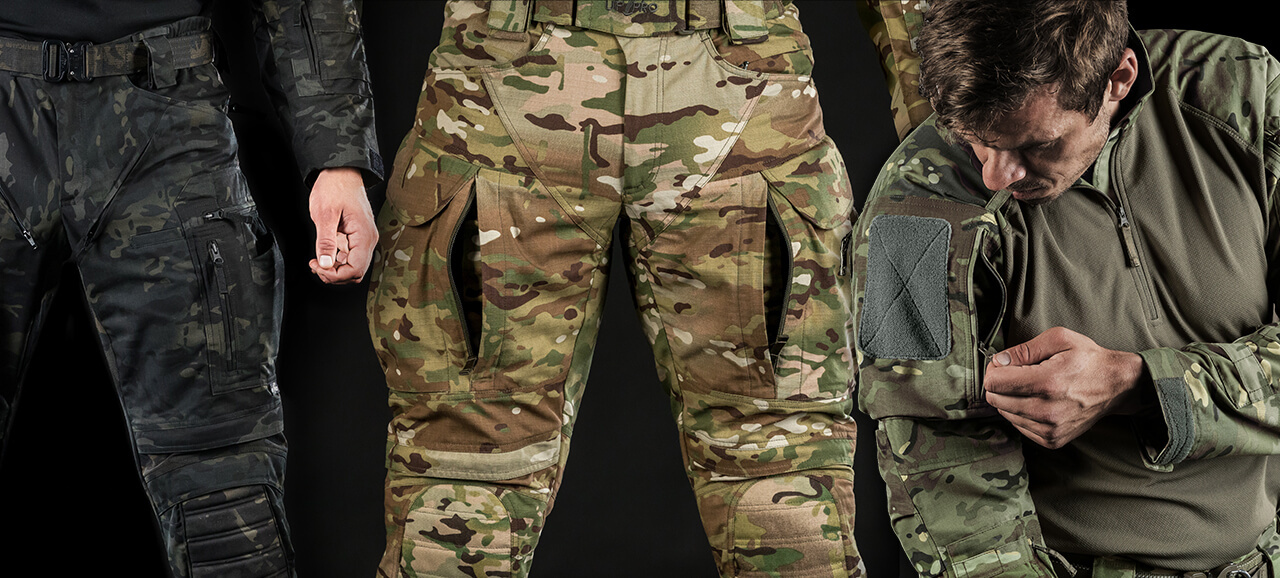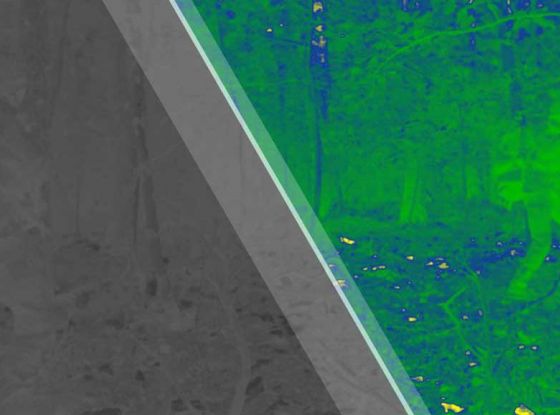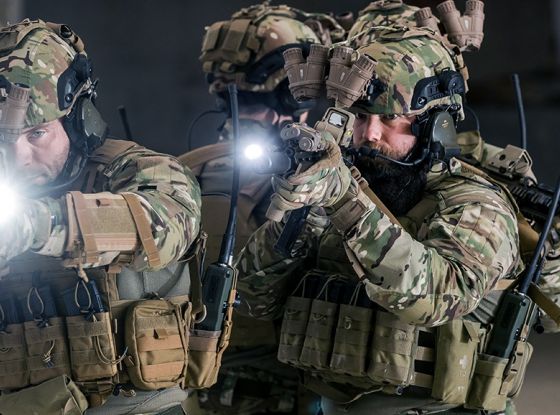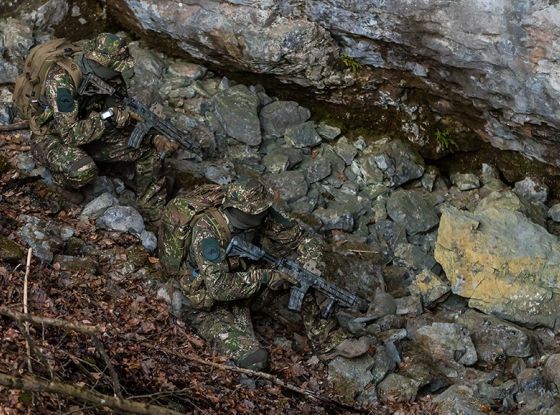MultiCam has been the focal point of camouflage discussions since 2002. Since that time, it has expanded into a family of five distinct variations. Together, they are usable in the most common environments. But there was more to this expansion than just switching colours. It was something that required care and precision.
In this blog post:
Introduction
There currently are five versions of MultiCam. All are based on an identical geometrical design. However, each variation is designed for maximum effectiveness in a specific environment.
The five versions are:
-
MultiCam
-
MultiCam Arid
-
MultiCam Tropic
-
MultiCam Alpine
-
MultiCam Black
Different versions, yes. But all are united around a common theme, and that is to make the MultiCam family appealing as an overall solution.
The original MultiCam pattern is known for its versatility. That’s why it’s called the “80-percent solution” for most environments.
Given how well it performs, you’d naturally expect the newer MultiCam versions to be just as versatile. And, indeed, they are—despite sharing the original MultiCam’s shortcoming of effective blending at longer distances.
MultiCam’s variations weren’t easily created
A pattern's geometrical design is like the foundation of a building. It’s the starting point for everything. In the case of camouflage, geometrical design serves the purpose of breaking the wearer’s outline at closer distances. It so happens that the base geometry of MultiCam does this quite well.
So you might think that creating a new pattern variation is a “fire and forget” deal where you take the geometry, slap on a new colour scheme, and—voila—a new MultiCam variant is born. Spoiler alert: you would be wrong to think that. There’s more to this dance than meets the eye.
For proof, let’s step back in time to the year 2002 and look at the effort to develop the U.S. military’s Universal Camouflage Pattern (UCP, for short).
That year and continuing until 2004, the Americans investigated potential replacements for their then-active Woodland and Desert camouflage uniforms. A total of four camouflage patterns were selected for testing in the three scenarios—woodland, desert, and urban—under day and night conditions.
The Americans had the idea that they would take the colour scheme that performed best in each scenario and combine them into a single pattern. This, they hoped, would result in an effective all-in one pattern.
What emerged was CADPAT/MARPAT, America’s UCP, which you might know as the U.S. Army’s 2004-19 Operational Camouflage pattern.
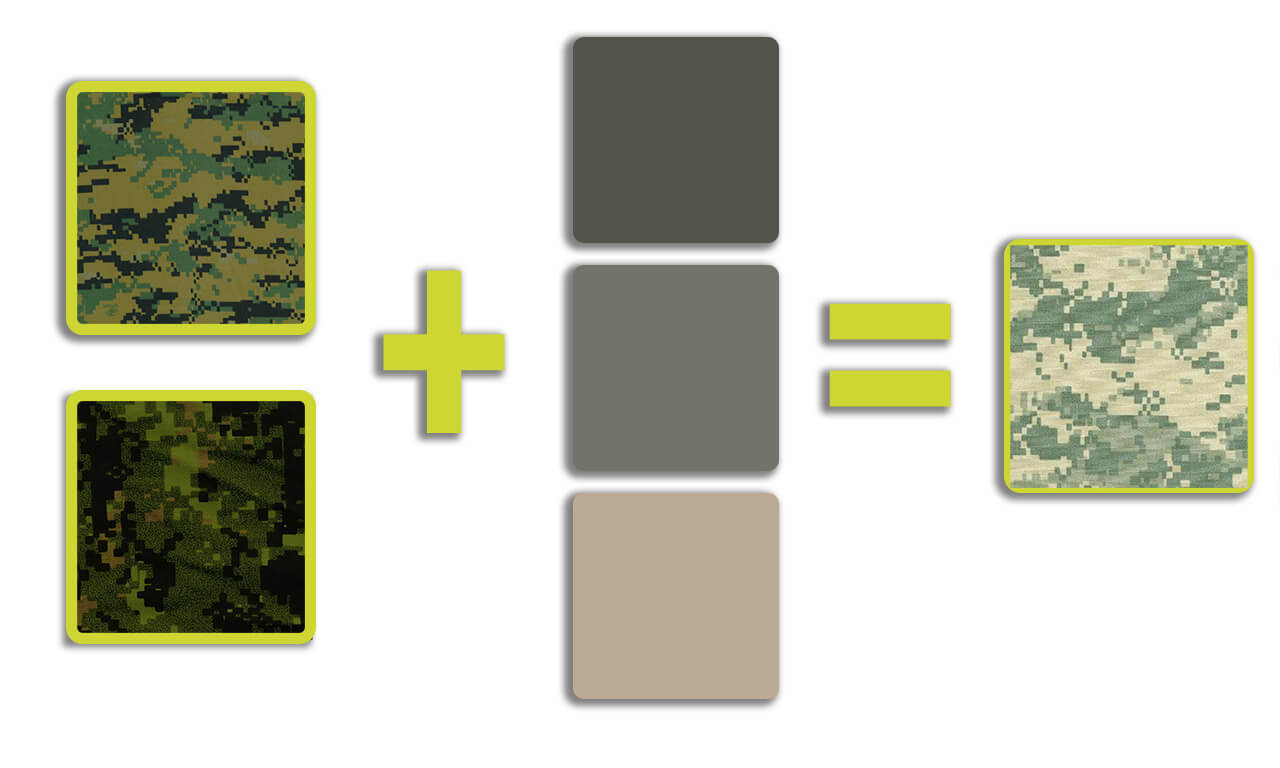
However, UCP did not live up to its promise. Perhaps this was a good thing because it allowed the makers of modern camouflage to recognise that pan-environment effectiveness was unattainable and that what was needed instead to achieve better performance in widely different landscapes was more specialized versions.
(To be fair, UCP was fielded without the benefit of proper testing. A better version was developed later and is known as the AOR-Universal camouflage pattern. So it’s possible that UCP might have proven less disappointing had additional time and resources been allocated to its testing.)
A good example of an environment-specific pattern family is CONCAMO. Fairly new in the tactical space, CONCAMO comes in three versions (green, brown, and beige) and looks to become the solution for verdant European forests, brown-and-orange fall landscapes, and arid or alpine environments.
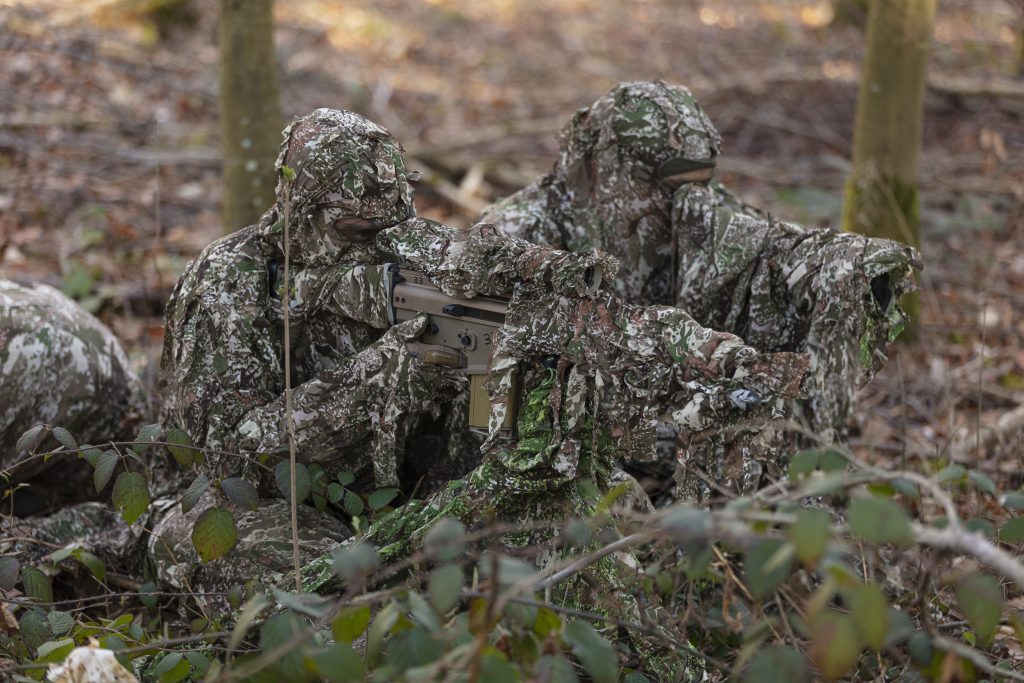
Image source: concamo.com
The same is true of other newcomers. PhantomLeaf camouflage, for example, offers seven variations: Z1A Hot Desert, Z1B Rock Desert, Z1C Snow Desert, Z2 Low-Growing Vegetation, Z3A High Vegetation (without snow cover), Z3B High Vegetation (with snow cover), and Z4 Construction.
Still, developing a camouflage-pattern family requires far more than merely selecting a new colour scheme and pairing it with the original product’s base geometry.
Breakdown of MultiCam’s four added versions
In 2013, MultiCam added four versions: Arid, Alpine, Tropic, and Black. These were intended to make MultiCam suited for extreme environments, such as those found in the deserts of the Middle East as well as in dense tropical forests and snow-covered fields.
As you’d expect when talking about a product family, what's common here is the pattern. What’s different is the carefully selected colours.
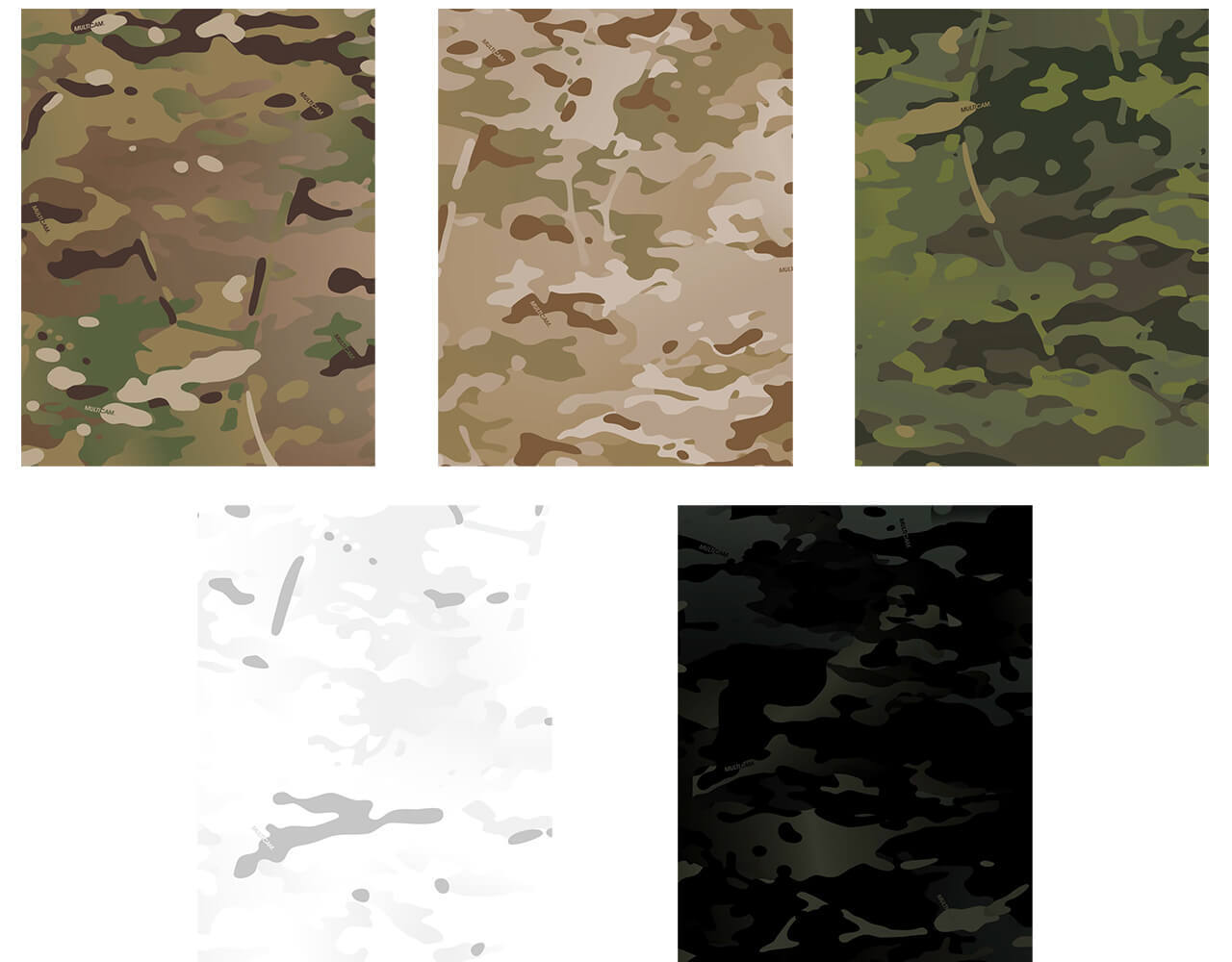
Image source: multicampattern.com
Pattern interchangeability a requirement set forth by the U.S. for its Camouflage Improvement Effort. The idea was that having the same base-pattern would allow troops to wear their gear with other versions—for example, a MultiCam plate carrier paired with a Tropic BDU.
Original MultiCam
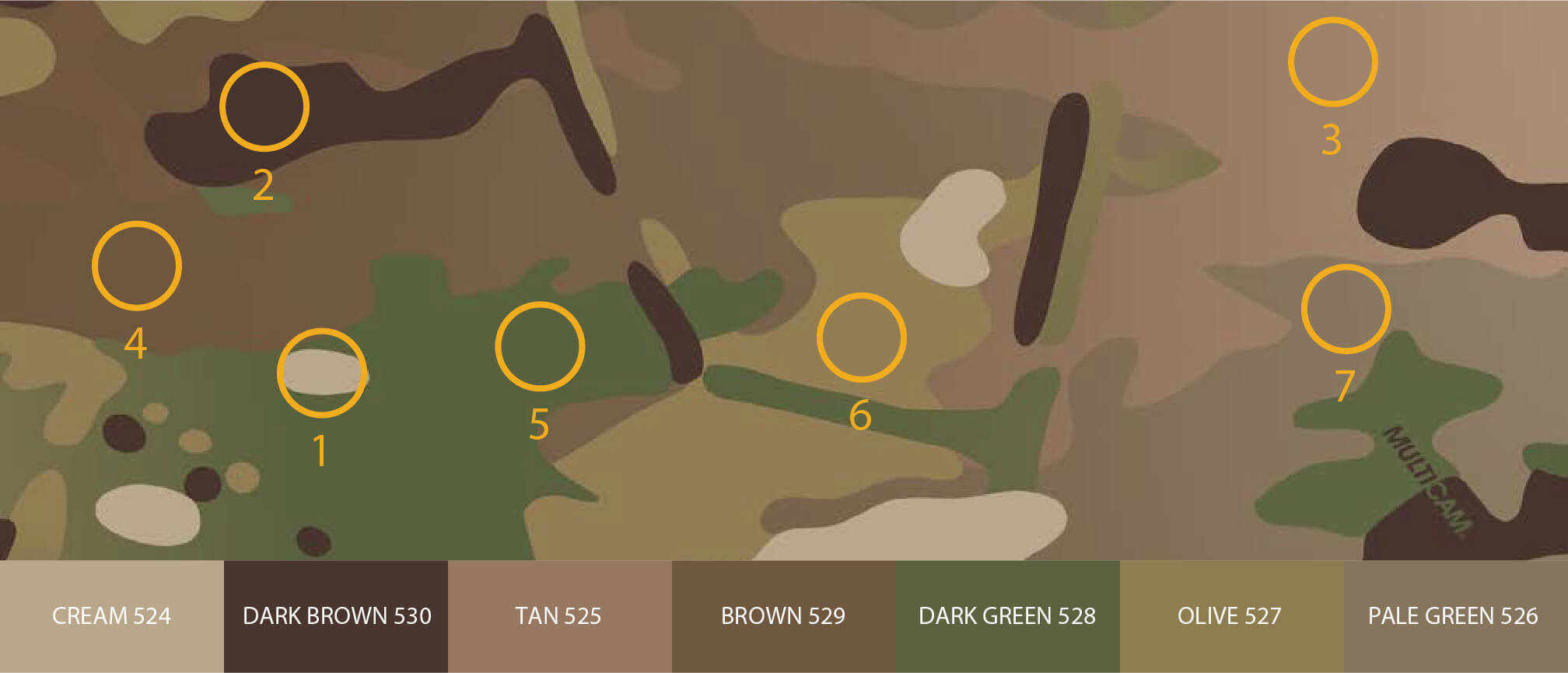 Image source: multicampattern.com
Image source: multicampattern.com
The MultiCam base pattern and everything about it has already been dissected and discussed into oblivion, so here’s a quick summary:
-
Date announced: 2002
-
Colour palette: cream, dark brown, brown, pale green, olive, tan, and dark green
-
Best-suited for: multiple environments
Considering that MultiCam has been adapted by the U.S. military, Canadian SF units, NATO forces, and many others, it’s inarguably the most-widely used and best-recognised pattern in today’s tactical space.
If you want more intel on its base pattern, read “The differences between Scorpion W2 and MultiCam” and “How effective is MultiCam in different environments?”.
If you’re looking for tactical gear in MultiCam, check out our Striker lineup here.
MultiCam Arid
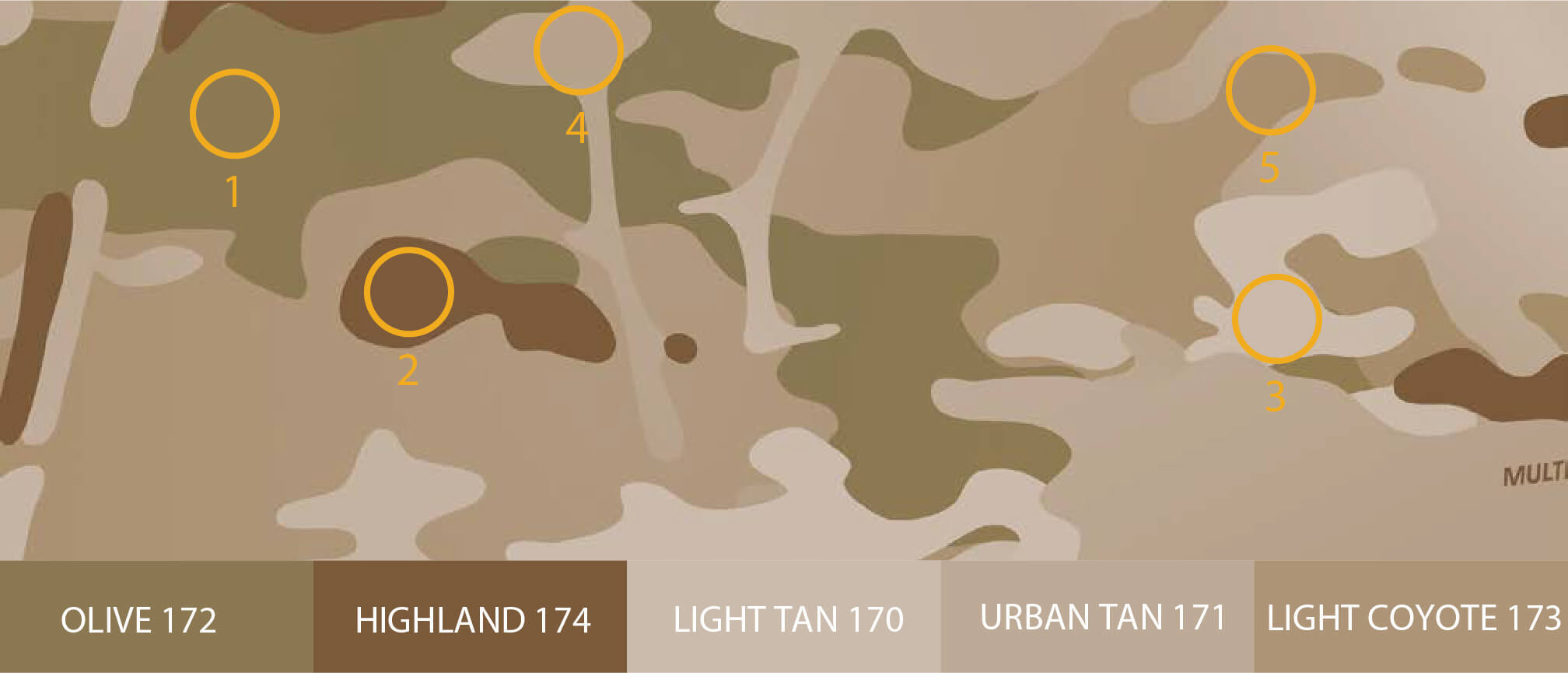 Image source: multicampattern.com
Image source: multicampattern.com
Arid answers the U.S. military’s requirement for effectiveness in the desert, which has been a major requirement of those forces since 2002. Here are the fast facts:
-
Date announced: 2013
-
Colour palette: olive, highland, light tan, urban tan, and light coyote
-
Best-suited for: desert environments consisting mostly of sand and rock
MultiCam Tropic
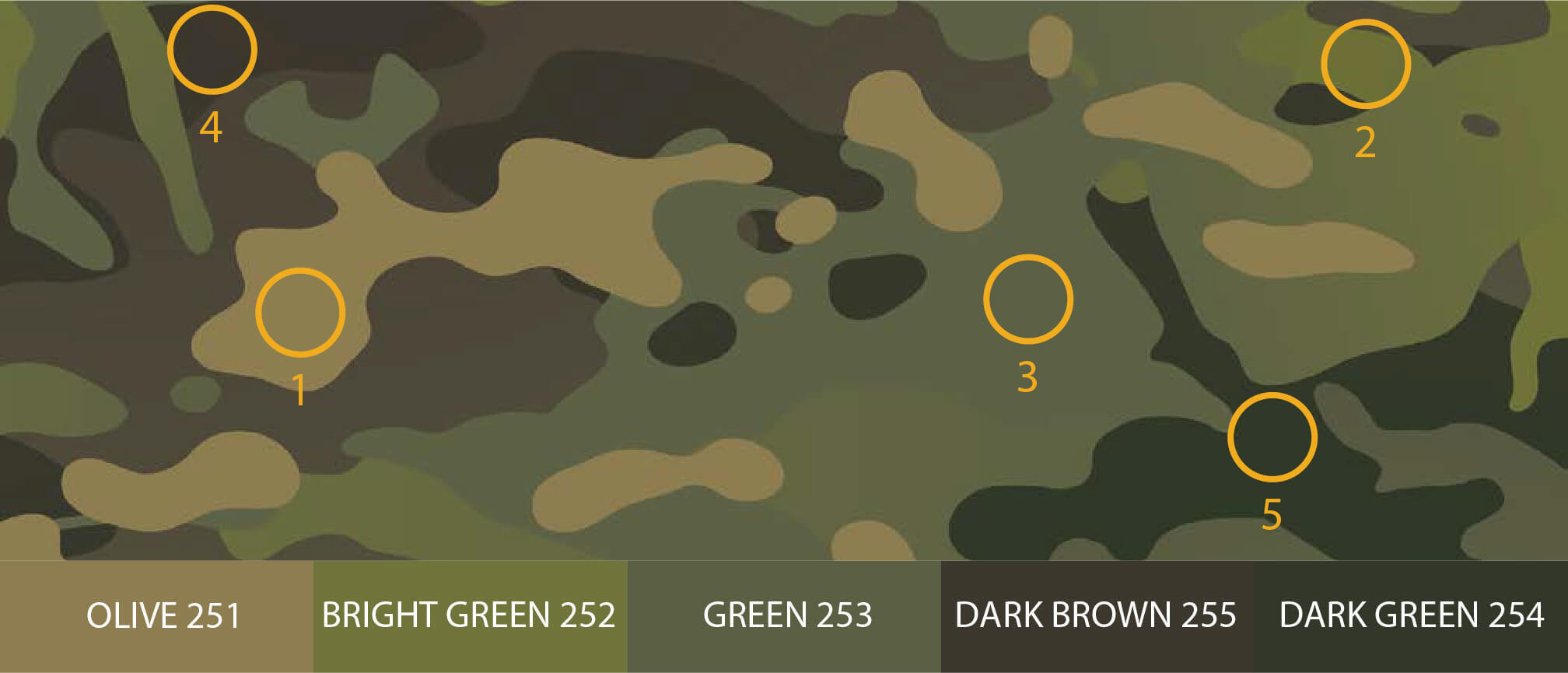 Image source: multicampattern.com
Image source: multicampattern.com
Designed as the go-to pattern for lush jungle environments, MultiCam Tropic features a predominantly green colour-scheme that makes it a standout of the MultiCam family. It’s currently being considered for adoption by the U.K.’s ground troops.
-
Date announced: 2013V
-
Colour palette: olive, bright green, green, dark brown, and dark green
-
Best-suited for: dense jungle environments and locales with lush vegetation
Our MultiCam Tropic lineup for the Striker BDU was announced earlier, but you can sign up here to be notified when it launches.
MultiCam Alpine
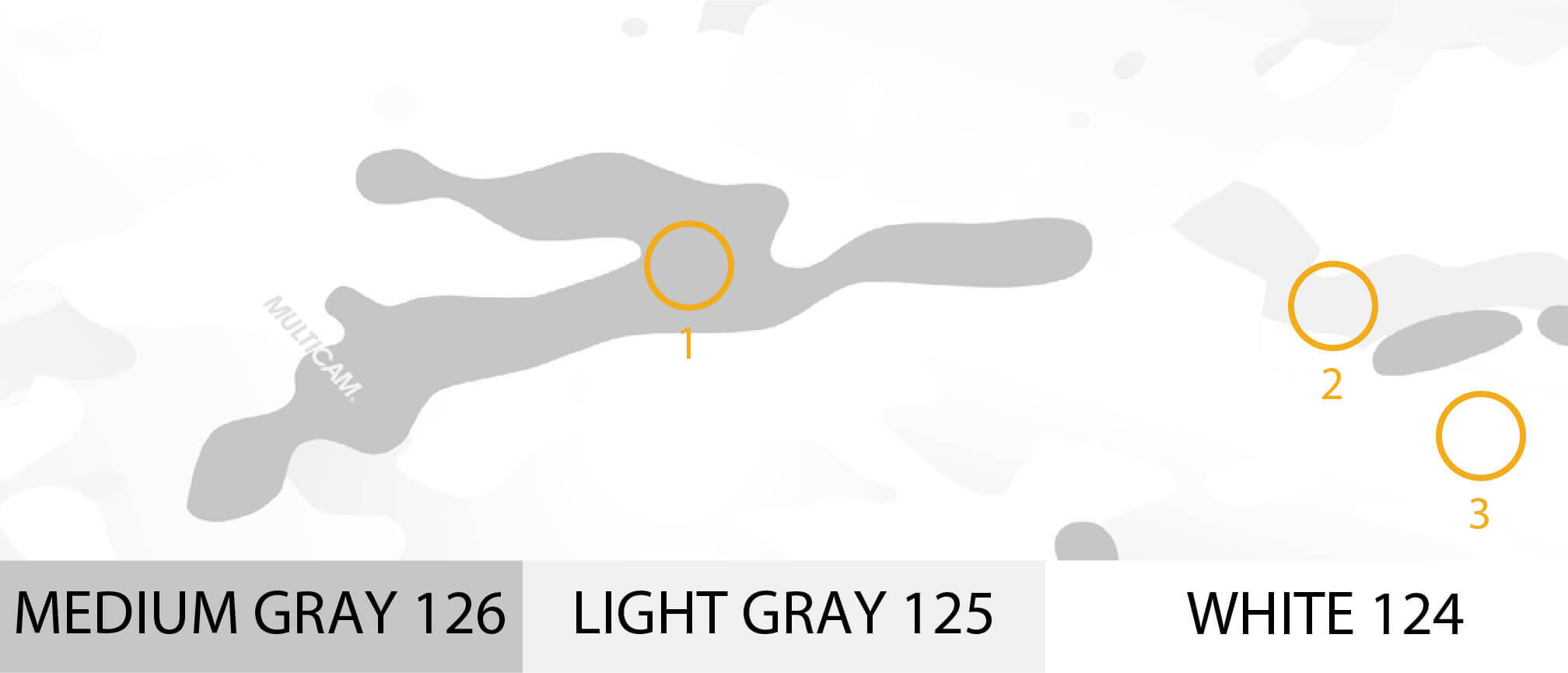 Image source: multicampattern.com
Image source: multicampattern.com
MultiCam Alpine is the solution to the missing piece of the MultiCam family’s saga—a pattern for snow-covered landscapes. It’s also on the lowest end of colours used, presenting just three shades of grey and white.
-
Date announced: 2013
-
Colour palette: medium grey, light gray, and white
-
Best-suited for: snow-covered environments
MultiCam Black
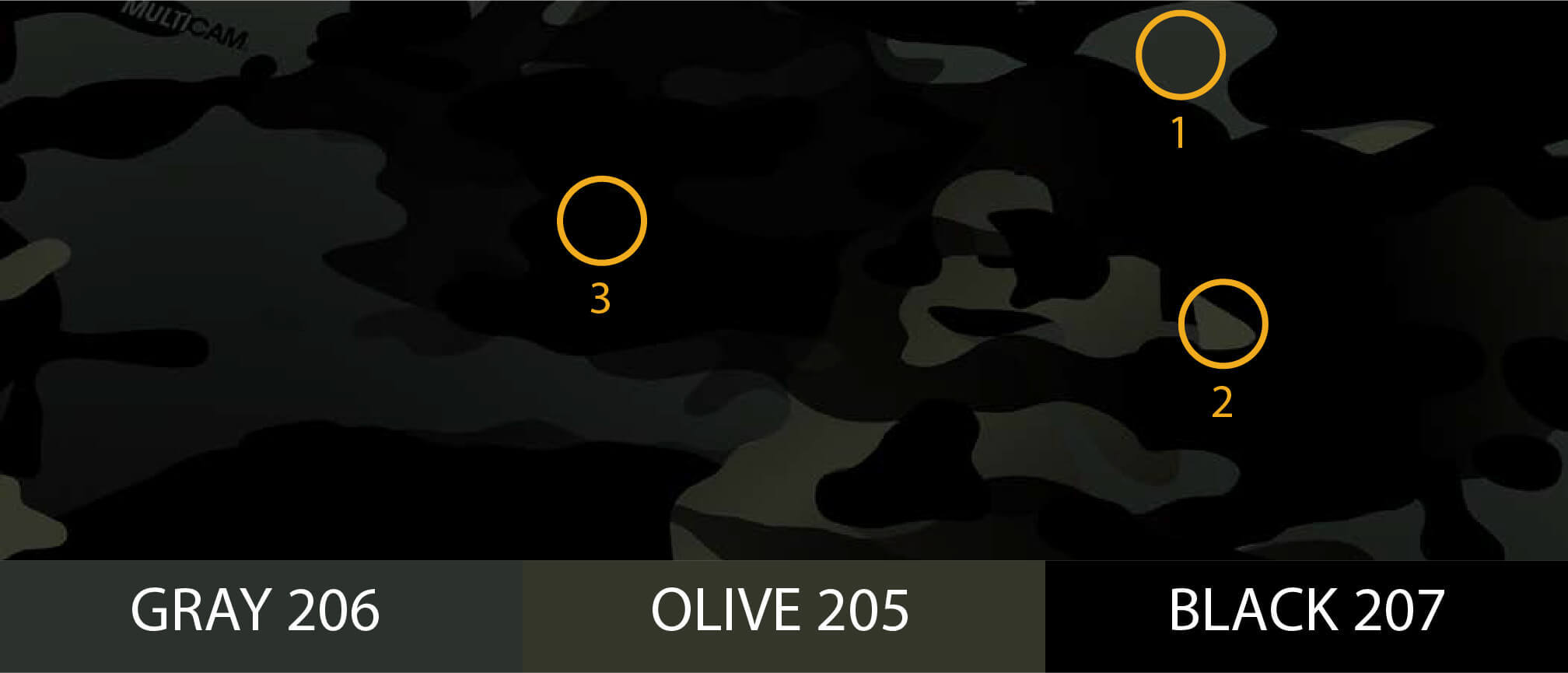 Image source: multicampattern.com
Image source: multicampattern.com
This one is the black sheep of the bunch (pun intended). MultiCam Black’s purpose is to stand out, and it does that with flying colours. This pattern was designed to expand the lineup into the field of law enforcement and to make military SF units distinctly identifiable.
-
Date announced: 2013
-
Colour palette: grey, olive, and black
-
Special properties: near-infrared
-
Best-suited for: high-risk environments
-
Used by: SWAT teams and LE units
Browse our tactical gear in MultiCam Black here.
Outro
MultiCam gets dragged through the mud every time there’s a discussion about camouflage. Like it or not, MultiCam was one of the most significant changes in modern camouflage history. The base version continues to dominate the market, a position that has been nothing if not strengthened by the introduction of an entire family of MultiCam products.
The various MultiCam patterns do what the base version does best—disrupt the wearer’s outline at closer range while remaining somewhat effective at longer distances. Small wonder, then, that many armies and SF units are considering making the switch to MultiCam Tropic and others as their day-to-day camouflage pattern.

